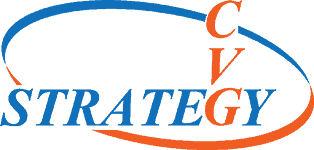
Gunfire Shock MIL-STD-810 Method 519 testing is performed to ensure that equipment can operate and structurally withstand short duration, high-rate shocks from gunfire. This test method is not intended for single shot gunfire from large Navy or tank guns. Types of gunfire shock are referred to as gunfire schedules. These shocks can include a combination of shock transmitted through a structure or an airborne shock generated by gun muzzle blast pressure waves.
Procedures for Gunfire Shock Testing
There are three test procedures available for Gunfire Shock:
- Procedure I: Measured Materiel Input/Response Time History Under TWR. This procedure is applicable when measured time trace information is available. This data would be replicated with Single-Exciter/Single-Axis (SESA), using Time Waveform Replication (TWR).
- Procedure II: SRS Generated Shock Time History Pulse Sequence Under TWR. This procedure is used when previously processed Shock Response Spectrum (SRS) is available. This single shock is then concatenated into a shock pulse series.
- Procedure III: Stochastically Generated Materiel Input from Preliminary Design Spectrum Under TWR. This procedure is to be used when no measured data is available. This procedure, while of value for engineering analysis, is not suitable for materiel qualification.
Testing Considerations
In most cases, testing can be performed at ambient temperature. However, when the operational environment of Unit Under Test (UUT) as determined in the Life Cycle Environmental Profile (LCEP) indicates operation at extreme temperatures, testing at high or low temperatures may be preferable.
Testing is normally performed on all axes with regards to structure born vibrations. Specific testing on appropriate axis may be performed to assess the effects of muzzle pressure pulses. The number of pulses used in testing should be based on an LCEP analysis as to frequency of expected exposures.
Detailed Environmental Test Plan Templates
CVG Strategy offers EZ Test Plan Templates for MIL-STD environmental (climatic/dynamic) and EMI/EMC test documentation. Our Detailed Environmental Test Plans (DETP)s are written as specified in Department of Defense standard MIL-STD-810 Task 405. They are available for specific applications such as Ground Mobile, Ground Stationary, and Shipboard Controlled, Shipboard Uncontrolled, and Aircraft Military.
These DETPs include appropriate methods, (such as Gunfire Shock MIL-STD-810 Method 519) addendums for product specific information, test labels for photo identification and data sheets for collection of required data. Profile (LCEP).
Our Electromagnetic Interference Test Plans are written as specified in MIL-STD-461. They contain the test methodology, addendums for product specific information, test labels for photo identification and data sheets. These plans are available for procedures listed in MIL-STD-461 and are also available for MIL-STD-1275, MIL-STD-704, and MIL-STD-1399-300.
Custom Test Plans are also available for applications not covered in the EZ Test Plan offerings. These plans can be written for any number of applications and their relevant standards.
MIL-STD-810 Training Classes
CVG Strategy MIL-STD-810 classes will provide you with the ability to develop and conduct an environmental test program. Our two-day course not only provides you with valuable information about climatic and dynamic test methods but also includes training in the methodology to correctly apply test tailoring relevant to the test item’s expected life cycle.
This course is available online or onsite. Ample time is available for questions and comments so that participants are encouraged to keep engaged. Check here for our online Training Registration Schedule.
Put CVG Strategy’s Experience to Work for You
Companies of all sizes, from start up to established product developers, face challenges in product test and evaluation. This can particularly be the case when a product is developed for a new market sector or expanding sales internationally.
Properly tested products prevent costly product recalls, product redesign, and product liability. They maintain customer satisfaction and keep your company’s reputation in good standing. Contact CVG Strategy to see how our services can assist your engineering team with Gunfire Shock MIL-STD-810 Method 519 or any other MIL-STD-810 test and evaluation concern.


